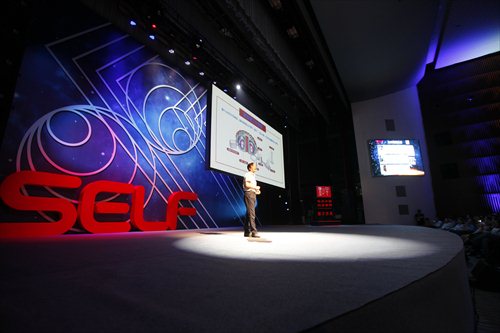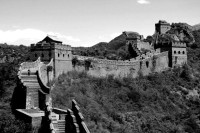An artificial sun
The era of fossil energy will come to an end sooner or later and what will replace this? This has become a pressing problem for every country and especially China.
Li Jiangang, a member of the Chinese Academy of Engineering and a leading expert on nuclear fusion in China told the audience that creating an artificial sun could solve the problem forever.
To create an artificial sun involves simulating the nuclear fusion which occurs at the sun's core in a man-made and controlled reactor. Li said the power it could produce would break mankind's reliance on fossil fuels and offer unlimited clean energy for mankind.
"All current sustainable energies are affected by weather, so nuclear fusion is the best choice. The fuel to maintain the fusion could be deuterium and tritium, the isotopes of hydrogen, and there are infinite reserves of these in the ocean. A cup of seawater can produce energy equal to that created by 300 liters of petrol. But it is much safer and causes barely any pollution," Li told the audience.
For 50 years, scientists around the world have been trying to realize this dream by building such a reactor. But it is not an easy task; the reactor must be able to work and be stable at 100 million Kelvins.
Although Li and his research team used the hardest metal on Earth (tungsten alloy) to build their reactor, they still needed to use the magnetic force produced by a superconductor to suspend the "nuclear fusion fireball" in the middle of the reactor, preventing it from touching the surrounds and melting down.
This reactor was built in Anhui Province, China and was officially known as the Experimental Advanced Superconducting Tokamak (EAST). In February this year, it achieved a breakthrough by heating hydrogen gas to around 50 million Kelvins for 102 seconds. This is the highest temperature and longest time nuclear scientists have achieved to date.
But Li pointed out that this breakthrough only occurred after more than 200,000 experiments and 40,000 failures over 34 years.
Li and his team also participated in an international project, designing and building an experimental fusion reactor: the ITER project in southern France. The ITER nations (China, the European Union, India, Japan, South Korea, Russia and the US) are now engaged in a 35-year collaboration to build and operate the ITER experimental reactor, and bring fusion to the point where a demonstration fusion reactor can be designed.
Although a commercial model will probably not be achievable until 2050 Li said he hoped the first reactor of this type would be built in China.
"I hope I can see an artificial sun being built in my lifetime and see it brightening all the places still in the shadows," Li said.




